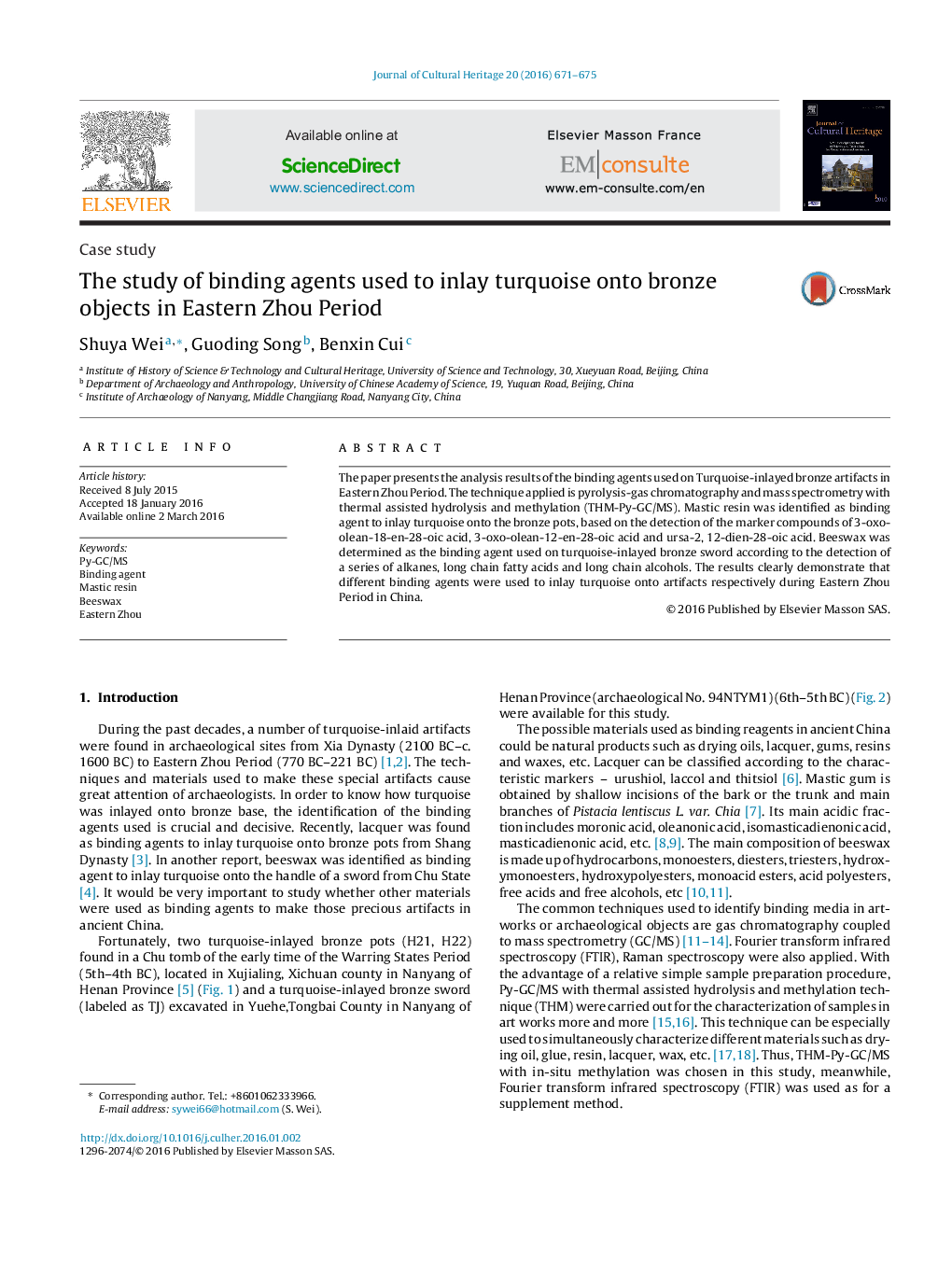| Article ID | Journal | Published Year | Pages | File Type |
|---|---|---|---|---|
| 1037822 | Journal of Cultural Heritage | 2016 | 5 Pages |
Abstract
The paper presents the analysis results of the binding agents used on Turquoise-inlayed bronze artifacts in Eastern Zhou Period. The technique applied is pyrolysis-gas chromatography and mass spectrometry with thermal assisted hydrolysis and methylation (THM-Py-GC/MS). Mastic resin was identified as binding agent to inlay turquoise onto the bronze pots, based on the detection of the marker compounds of 3-oxo-olean-18-en-28-oic acid, 3-oxo-olean-12-en-28-oic acid and ursa-2, 12-dien-28-oic acid. Beeswax was determined as the binding agent used on turquoise-inlayed bronze sword according to the detection of a series of alkanes, long chain fatty acids and long chain alcohols. The results clearly demonstrate that different binding agents were used to inlay turquoise onto artifacts respectively during Eastern Zhou Period in China.
Keywords
Related Topics
Physical Sciences and Engineering
Chemistry
Physical and Theoretical Chemistry
Authors
Shuya Wei, Guoding Song, Benxin Cui,
